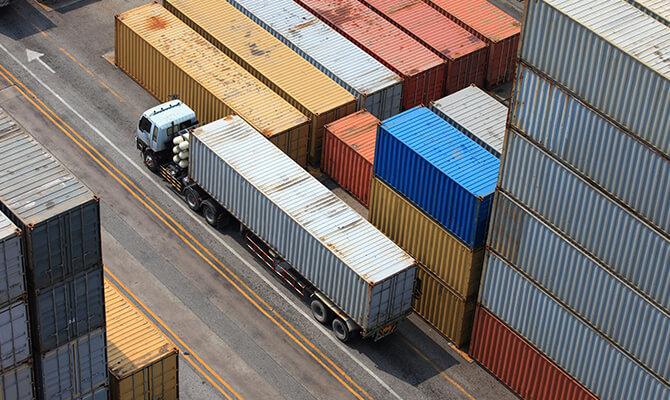Commodity trading companies spend a lot of time and energy developing strategies to mitigate risk. Hedging alone isn’t enough, because at the end of the day, commodity trading requires moving commodities across the supply chain. Therefore, effective supply chain management is essential to profitable commodity trading.
Effective supply chain management can be divided into two key activities: managing and optimizing supply chain logistics and minimizing the effects of supply chain disruptions.

Optimizing supply chain logistics
Effective supply chain optimization requires connected, real-time data. To truly optimize your supply chain, you need to know the status of all your commodities in real time. How much is in transit, and where? How much is available and ready for pickup? What is still being mined or farmed? How much is in storage, and where?
With the invention of IoT sensors, smart phones in the hands of over 5 billion people worldwide, and global internet accessibility, tracking inventory from farm to fork, mine to manufacturer, or well to refinery is possible. Bringing all this data together on one unified platform ensures that everyone in the organization has a complete, accurate picture of every product in every stage of the supply chain and enables trading companies to optimize scheduling, transportation and storage.
Imagine you are a farmer harvesting corn. With real-time visibility across the entire supply chain, you know exactly which storage containers have capacity available, which crops are ready to be harvested, which crops need more time, and what orders you need to fill. With real-time visibility throughout the entire supply chain, you can fill those orders by matching available trucks to storage units and choosing the right combination of trucks and storage units to reduce miles, increase efficiency, and fulfill orders more profitably.
Minimizing the effects of supply chain disruptions
Hetmayar
Real-time data is also critical for avoiding the worst effects of supply chain disruptions. If you are monitoring your entire supply chain in real time, you know the moment a disruption occurs and you can quickly react. Combine real-time data with advanced analytics, and you can quickly run simulations to evaluate potential options – does moving from truck to rail make sense? Does rerouting around a storm save time? Should you hold shipments for a day and wait for a storm to pass?
Additionally, with a commodity management platform like Eka’s, you can create user-defined alerts to let you know the moment a disruption occurs – day or night – so you can act fast and reduce the impact of the disruption. Using advanced analytics, you can run simulations long before disruptions occur to test potential scenarios and better prepare for possible disruptions. You can monitor changing weather patterns, global politics, shifting fuel prices and trade wars in real time and choose the best options to keep your products moving – profitably.
Effective commodity trading requires an optimized, well-run supply chain. Big data and advanced analytics drive supply chain efficiency and help you boost performance.
Learn more about Eka’s commodity management platform.
Mary DeFilippe spends her days creating engaging content – blogs, white papers, articles, and more – that helps readers better understand new technology. She can frequently be found walking around the office listening to heavy metal music while pondering ideas for her next blog.

